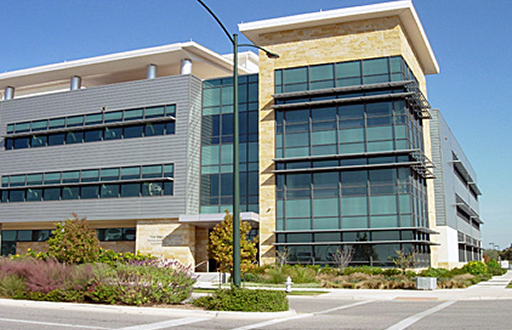A new, $100 million state-of-the-art, pediatric medical research and training facility requires pristine air quality. For the ground-breaking studies into cancer, birth defects, epilepsy, neuroscience and drug development taking place inside, physicians and scientists depend on a clean, controlled environment.
This was the challenge faced by HTS Texas in providing top-of-the-line, energy-efficient HVAC equipment for the Dell Pediatric Research Institute (DPRI) at The University of Texas at Austin. A vital extension of the U.T. System, this 150,000-square-foot facility, located next to the Dell Children’s Medical Center in Austin, holds a LEED Gold Certification for its many sustainable attributes.
“Our goal in equipping this research and office building was to ensure energy efficiency and sustainability, with long-term cost savings for our client, HOK,” said Darren Bentley, HTS Texas Market Development Director – Commercial structures. “By providing eight custom Haakon units with SEMCO Exclu-Sieve® Energy Wheels, we saved the owner nearly $3 million over the 20-year life of the equipment.”
The desiccant-based energy wheels pre-condition outside air and reduce the chiller load, thereby resulting in impressive cost and energy savings. And the owner can look forward to very minimal maintenance on the equipment for many years to come.
This technology also transfers moisture in vapor form, thereby eliminating wet surfaces and any potential microbial contamination.
“The SEMCO wheel energy performance, construction, and virtually non-existent cross contamination, along with its many independent validation tests, was an ideal fit for this critical application,” said Gary Kuzma, senior vice president and director of MEP engineering at HOK, which designed the facility. “The flexibility and quality of Haakon custom air handling units paired with the SEMCO energy recovery wheels have proven to be an excellent combination.”
Another excellent combination is the blend of basic genetic research with the cutting-edge clinical treatment that occur side-by-side in the DPRI. From the laboratory to the bedside, this new institute ushers children one step closer to health.


